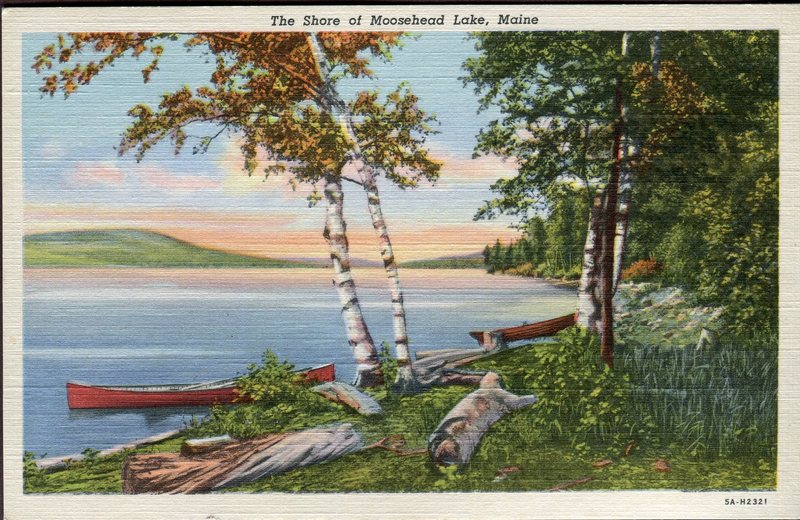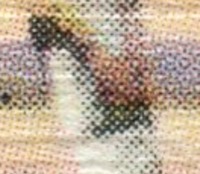Process Printing
A significant advancement in printing technology and color theory came with the introduction of tricolor and then process printing. Tricolor printing was very similar to the process of printing using the tinted halftone method: it still involved the use of a key plate, typically a black halftone, and the use of three other colors plates, typically red, yellow, and blue (RYB) or red, green, and blue (RGB). Tricolor printing soon gave way to process printing, which instead of RGB or RYB palettes, used the CMYK (Cyan, Magenta, Yellow, Key [black]) palette, which color theorists believed could better represent the spectrum of color.
The key difference between tinted halftone and process printing was the angle at which the plates overlaid each other. Each color plate, often still created using the halftone principle, was rotated at a precise angle to that of the black key plate—this precise rotation allowed the colors to optically combine in such a way that other colors could be perceived from it. The rotation of each plate also created the signature "rosette" that makes tricolor and process printing recognizable.1
One of the pioneers of process printing in the American postcard industry was Curt Teich & Co., whose "linen" postcards, created through process printing, proliferated in the early 1930s through the 1950s in the United States. Teich's postcards are recognizable for their vibrant colors that, while perhaps not representing "realistic" colors, are evidence of the highly improved color blending and variety offered by process printing.
Curt Teich actually used a five-color process to print many of their postcards—in addition to the four colors of CMYK, Teich's fifth color was typically a darker blue.2 Teich named their five-color process "C.T. Art-Colortone," and it was used exclusively for their linen cards. With this five-color process, "Teich obtained a richness of hue similar to traditional hand-printed, fifteen-color lithographic work. . ." notes cultural historian Jeffrey L. Meikle.3
A closer examination of the above postcard reveals the trademark rosettes of process printing, evident in Curt Teich's "C.T. Art-Colortone" postcards (Fig. 1).
Teich began using their five-color process in 1931, with the acquisition of new, high-speed printing presses, and continued using this method well into the 1950s. However, Teich's use of this technique steadily declined after 1953, until only six unique postcards were printed using the five-color method in 1959, and C.T. Art-Colortone gave way to a simpler four-color process.4 However, during the 29 years of Curt Teich & Co.'s production of five-color process postcards, they printed about 45,000 unique views.5 In addition to having gone through the recognizable five-color printing process with its signature vibrant colors, each of Curt Teich's Art-Colortone cards from this era underwent another, perhaps less visible, process: retouching.
Footnotes
- Alan Petrulis, "Tricolor and Process Printing: Tricolor Process," MetroPostcard.com, http://www.metropostcard.com/tech4-tricolor.html (accessed August 30, 2018).
- Lake County Discovery Museum (LCDM), "Guide to Dating Curt Teich Postcards," 2011, PDF file, https://www.newberry.org/sites/default/files/researchguide-attachments/Teich_Postcard_Dating_Guide_2016.pdf (accessed August 30, 2018), 2, and Jeffrey L. Meikle, Postcard America: Curt Teich and the Imaging of a Nation, 1931-1950 (Austin: University of Texas Press, 2016), 38.
- Meikle, 40.
- LCDM, "Guide to Dating Curt Teich Postcards," 2-3.
- Meikle, 5.


